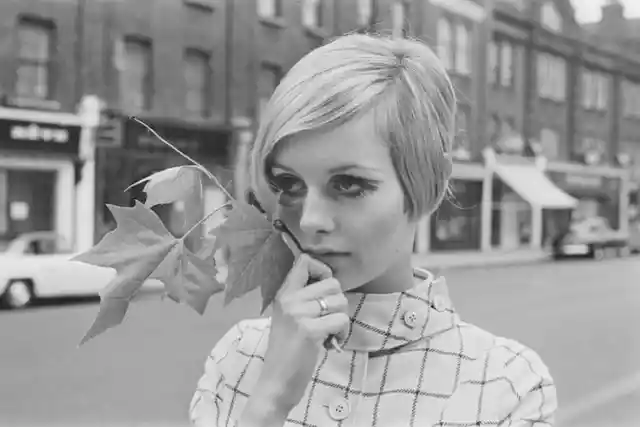The Discovery Of Twiggy
Most everyone can recognize her iconic cropped blonde hair and dramatic doll-like eye makeup. Often dressed in bold, experimental fashion, Twiggy is the most iconic model of the ’60s and is still a prominent figure in fashion today. The small-town girl has come a long way since her first photo shoot in 1966, becoming an icon of “mod-style” and representative of the pop culture of the decade.


Twiggy was known as Leslie Hornsby and was born in 1949 in Neasden, England. Her family was working class, with her mother being a factory worker and her father a carpenter. From an early age, she had an affinity for fashion and even sewed some of her own clothes. At the age of 16, her life would change drastically after a haircut.
In 1966, Twiggy stopped by a posh salon to buy a bottle of shampoo. The owner of the salon, celebrity hairstylist Leonard Lewis, offered her a haircut. The finished hairstyle was photographed professionally and a photo was hung up in the salon.
Soon after, a journalist for the Daily Express saw the photos and asked to meet Twiggy. More professional photo shoots were arranged by the journalist, and a few weeks later, an article was published about Twiggy in the Daily Express.
Fashion Forward


Twiggy exploded onto the fashion scene, getting modeling jobs immediately. Her popularity grew so much within a short time that she was named Britain’s “Woman of the Year” in 1966. She appeared in several fashion magazines and scored her first Vogue cover in 1967.
People were entranced by her thin figure, dark eye makeup, and short, chic blonde hair, which was a departure from the buxom, curvy models of the 50s. She inspired many new trends of the 60’s such as shift dresses, menswear for women, and loafer shoes.
Starting in 1967, Twiggy began modeling internationally. Her career took her to America, France, and Japan, and she made fans worldwide. She continued her modeling career until she decided she wanted to pursue other endeavors in 1970. She is quoted as saying, “You can’t be a clothes hanger for your entire life!”
Life After Modeling


After achieving worldwide success in the fashion world, Twiggy grew bored with modeling and wanted to pursue other creative opportunities. She met film director Ken Russell and after studying film with him, she starred in his 1971 film “The Boy Friend”, for which Twiggy won two Golden Globes for her performance. She subsequently starred in several other films.
Twiggy is also a singing talent and has released several albums since 1971. Her most recent release was in 2011, and she plans to continue making music. She is also an entrepreneur, with her own fashion line, Twiggy London, on the Home Shopping Network. She continues to contribute to arts and fashion still today.
The Impact Of Twiggy


Despite only being a model for four years of her life, Twiggy is most well-known for her modeling career. She has remained an icon throughout the decades and remains one still today. Teenage girls of every generation are still enchanted by the first photo they eventually see of Twiggy: the short swooped hair, doll-like eye makeup, and sophisticated stare into the camera. With a signature look like that, it’s no wonder that she became an icon of the 60s along with the likes of Bridgette Bardot and Audrey Hepburn.
Though Twiggy’s thin figure was a natural result of her young age, it made a lasting impact on the fashion industry to favor slim women. Styles worn by Twiggy changed the fashion trends of the 60s, bringing boxy dress styles into fashion as the world became increasingly more modern. Twiggy paved the way for models to earn a higher income and become “supermodels.” She is also arguably one of the first model entrepreneurs and a woman of many talents.
That famous image of 16-year-old Twiggy is still immortalized in our minds. Twiggy has earned her place as a symbol of the 60s, and rightfully so. While her 60’s fashions will forever be iconic, the star has had a lasting influence over pop culture, even today.